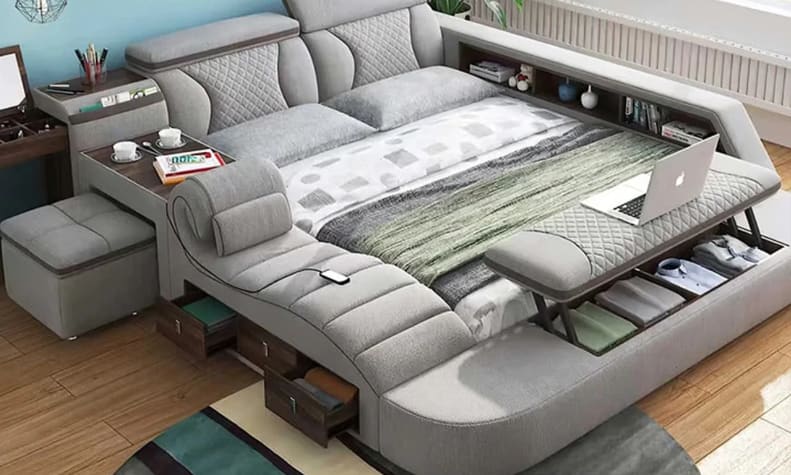Smart Space & Style: The Complete Guide to Fitted Wardrobes
Fitted wardrobes are the ultimate custom storage solution, blending style with space-saving design. Discover how bespoke fitted wardrobes make the most of awkward corners, sloped ceilings and compact rooms while offering tailored interiors, enhanced aesthetics and potential property value gains. Learn about styles, internal fittings, smart options and typical price ranges to help you choose the best fitted wardrobe for your home.

How fitted wardrobes stand apart from freestanding furniture
Fitted wardrobes differ fundamentally from standard, freestanding units. Off-the-shelf wardrobes are manufactured in fixed sizes and simply placed into a room, which can leave gaps, wasted space and a less cohesive look. Fitted wardrobes are built to the exact dimensions of your space, so every centimetre is put to use. This bespoke approach creates a seamless finish that can visually expand a room by removing awkward voids and aligning perfectly with walls, alcoves and sloping ceilings.
Benefits of installing a fitted wardrobe
Choosing a fitted wardrobe delivers several practical and aesthetic advantages. First, customization is the biggest draw: you decide the mix of hanging rails, shelving, drawers and compartments to suit your wardrobe habits. Second, space efficiency is improved because units are measured and installed to match the room layout, which is especially valuable in small bedrooms and unusual spaces. Third, fixed cabinetry often increases perceived value of a property, since buyers tend to appreciate built-in storage. Finally, fitted wardrobes give a neater, more integrated look that complements your room design rather than competing with it.
Customization possibilities for better storage
Custom wardrobes allow for internal systems tailored to your lifestyle. Popular options include extended hanging sections for long coats, divided rails for shirts and trousers, pull-out shoe racks and dedicated drawers for accessories. Extras like tie and belt hangers, jewelry trays, valet rails and integrated ironing boards can be added. You can also opt for smart features such as motion-activated LED strips, built-in charging stations or concealed safes. Tailoring the internal layout reduces clutter and makes it far easier to locate items quickly, turning the wardrobe into a highly efficient storage hub.
Styles, materials and finishes to suit any home
Fitted wardrobes are available in a wide spectrum of styles to match contemporary and traditional interiors. Choices range from minimalist, handleless designs with high-gloss or matt lacquered doors to classic timber finishes with moulding and paneling. Materials commonly used include solid wood, engineered wood like MDF, laminate and glass, each offering different looks and price points. Mirrored doors are a common option for smaller rooms, reflecting light and creating the illusion of extra space. Hardware and door styles can be mixed and matched, so you can combine sliding doors for space-saving with hinged doors where access is needed.
What affects the cost of fitted wardrobes
Pricing is influenced by the size of the installation, the materials and finishes selected, the complexity of the design, and any internal fittings or electrical additions. Bespoke work such as angled or built-in units for eaves and alcoves can also increase the cost. Many companies provide free design consultations and site surveys to produce an accurate quote, which helps you understand the trade-offs between budget and features.
| Provider | Basic Range (per m²) | Mid-Range (per m²) | Luxury Range (per m²) |
|---|---|---|---|
| Sharps | £500 - £700 | £700 - £900 | £900 - £1200+ |
| Hammonds | £600 - £800 | £800 - £1000 | £1000 - £1500+ |
| IKEA PAX | £200 - £400 | £400 - £600 | £600 - £800 |
| Sliderobes | £700 - £900 | £900 - £1100 | £1100 - £1500+ |
Prices, rates, or cost estimates mentioned in this article are based on current information and may change. Independent research is advised before making financial decisions.
How to approach planning and installation
Begin with a clear idea of what you need to store, from clothing types to accessories and seasonal items. Measure the room carefully or arrange a professional survey so the installer can design around skirting boards, coving and radiators. Think about door styles in relation to room layout: sliding doors save floor space while hinged doors may offer better access to deeper compartments. Ask designers to show visualisations or sample finishes so you can assess colour and texture against your décor.
Installation typically involves a site visit, confirmation of the design, manufacture of the components and on-site fitting. Lead times vary by supplier and level of customization; build and fitting can take anywhere from a few days for modular systems to several weeks for fully bespoke cabinetry. Always confirm whether installation and any alterations to walls or electrics are included in the quote.
Long-term advantages and maintenance
Well-made fitted wardrobes are durable and often easier to maintain than freestanding furniture because they are fixed and avoid movement-related wear. Regularly decluttering and using organizers will keep interiors functional. For finishes such as lacquer or laminate, follow manufacturer cleaning guidance to prevent damage. Over time, a carefully chosen fitted wardrobe can remain stylish and practical for many years, reinforcing its value as an investment in your home.
Final thoughts
Fitted wardrobes combine efficient use of space with personalized design, making them a compelling option for homeowners seeking order and style. Whether you are maximising storage in a compact bedroom, creating a luxurious dressing area, or fitting tricky spaces beneath eaves and alcoves, bespoke wardrobes provide tailored solutions that off-the-shelf furniture cannot match. Evaluate your needs, explore styles and finishes, and obtain detailed quotes to find a fitted wardrobe that balances your budget, storage requirements and aesthetic goals.






